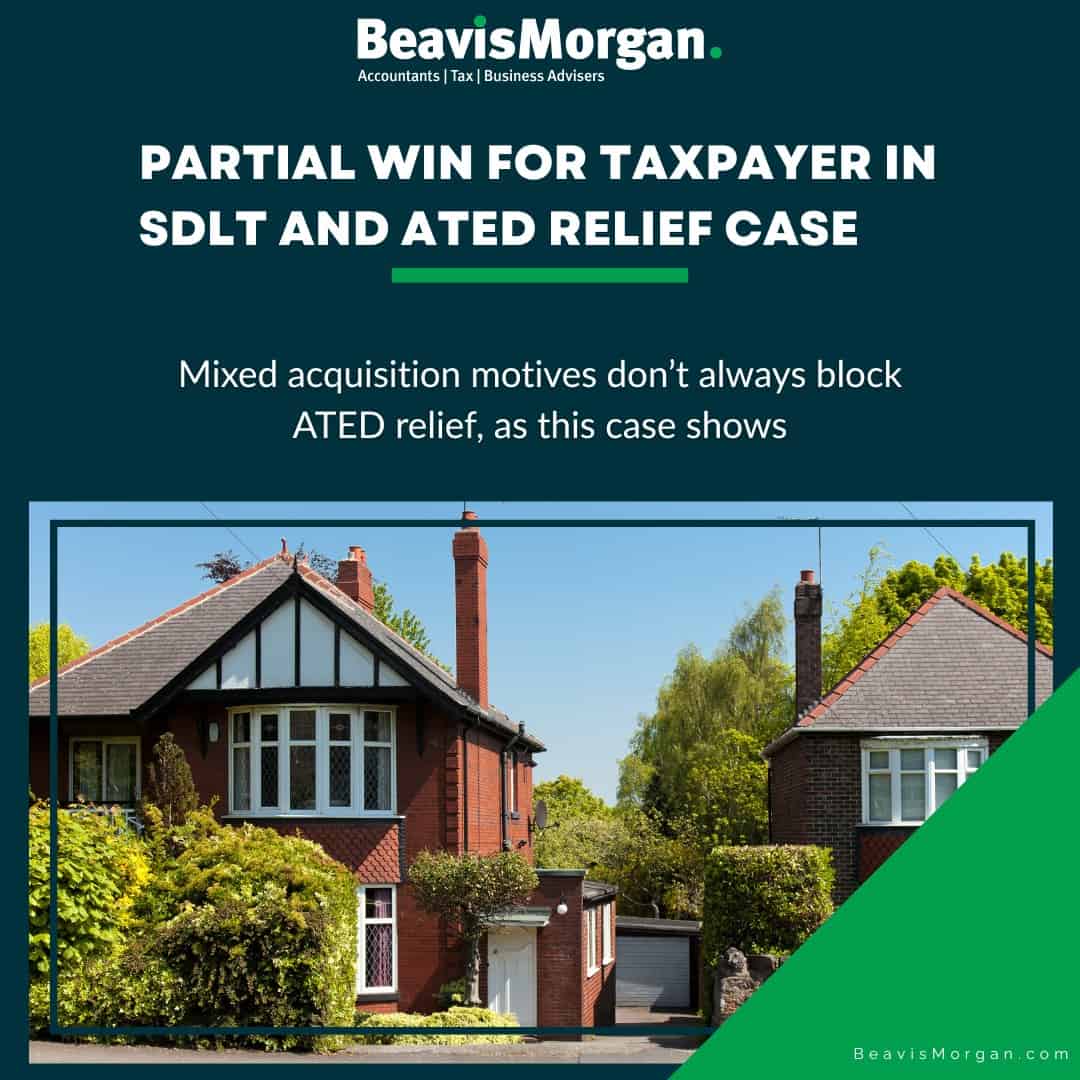A recent Upper Tribunal (UT) decision in Investment and Securities Trust Limited v HMRC has provided useful clarity on the distinction between Stamp Duty Land Tax (SDLT) relief and Annual Tax on Enveloped Dwellings (ATED) relief in property development cases.
The UT ruled that the company was entitled to ATED relief, but not to higher rate SDLT relief, after examining the purpose behind holding an option over a residential property.
Background
The company had acquired an option over a residential property for three reasons:
- To raise urgent funds for the director/shareholder
- To prevent the property being sold to a third party
- To allow time to secure development finance
The First Tier Tribunal (FTT) originally found that neither ATED relief nor higher rate SDLT relief applied. The taxpayer appealed.
Outcome of the Upper Tribunal Decision
-
Higher rate SDLT relief – Appeal dismissed
The UT agreed with the FTT’s conclusion:
- The condition for higher rate SDLT relief requires the chargeable interest to be acquired exclusively for development and resale.
- Because the company had three purposes at the time of acquiring the option, the “exclusively” test was not met.
- As a result, SDLT relief was not available.
-
ATED relief – Appeal allowed
The UT found that the FTT had misinterpreted the test for ATED relief:
- The question was whether the interest was held exclusively for development and resale, not whether it was acquired exclusively for those reasons.
- Once the option had been acquired, purposes (1) and (2) fell away. From that point on, the option was held only for development activity.
- The company therefore satisfied the statutory test.
- ATED relief applied.
What this means
This case highlights two important points:
- The timing of the purpose test differs between SDLT and ATED legislation.
- ATED relief can still apply even where initial acquisition motives are mixed, provided the ongoing reason for holding the interest is solely linked to development and resale.
For property developers and investors, this distinction can have a significant financial impact.
How we can help
Transactions involving options, development intentions and mixed-use property can quickly become complex from an SDLT, ATED and wider tax perspective. Getting the structure right at the outset is essential, especially as HMRC scrutiny increases and the interpretation of reliefs becomes narrower.
Our team at Beavis Morgan can review your position in full, advise on relief availability, support with restructuring where needed, and help ensure your documentation clearly reflects your commercial intentions. We also consider the VAT position at the same time. VAT on property is notoriously difficult, and the correct treatment isn’t always straightforward. A joined-up review allows us to identify risks early, prevent costly mistakes, and ensure the SDLT, ATED and VAT elements all align.
If you would like tailored advice or wish to discuss a current or upcoming transaction, please get in touch with your usual Beavis Morgan Partner or email info@beavismorgan.com.





